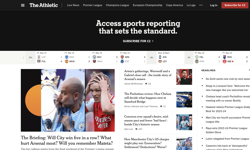First, a little good new for print; in the latest Deloitte State of the Media Democracy report on media consumption, 49% of the two thousand respondents said that they tend to pay greater attention to print advertising in newspapers or magazines than advertising on the internet, 20% took the opposing view, with the remainder staying neutral.
When we asked respondents in what form they had read their favourite newspapers in the last six months, 66% still said in print – up slightly on 60% two years ago. Twenty six per cent had read their favourite newspaper online; 7% by phone or smartphone; and 1% on a tablet computer.
Newspapers and magazines also play an important role in driving online traffic. Fifty three per cent of respondents said they frequently (7%) or occasionally (46%) visited a website as a result of reading a newspaper. The numbers for magazines were similar – 7% claiming that reading a magazine frequently resulted in visiting a website, 48% saying it occasionally did so.
This much is good news for those working in print. Despite continuing pressure on circulation figures, newspapers and magazines remain, in some respects, in rude health. Amid the hype of smartphones and tablets, print media still has a story to tell advertisers and agencies.
The Inevitable Concerns
Beneath the good news, there are three principal concerns. The first is the circulation numbers. There is no need to labour the point here for we all recognise the pressure falling circulation puts on ad prices, recruitment of talent, and profitability for publishing businesses.
The second concern is in the demographics. It is a truism that older people read print and younger ones get their news online. The divide is not quite so stark when we look at the numbers, but it is there nonetheless. Breaking down the 66% of respondents who said they had read their favourite newspaper in print in the past six months, among 18-24 year olds the proportion was 57% compared to 72% in the 55+ age group. A 15% spread from the youngest readers to the oldest is far from zero-sum: it suggests that print will continue to have readers for some time to come – but equally it may indicate that circulation figures will not recover to previous highs.
Not surprisingly, the demographic pattern is reversed for those reading newspapers online – 41% among 18-24 year olds read newspapers this way, compared with only 21% of 55+ year olds. Younger readers are also more open to new technology – up to 13% access news via smartphones compared to 2% of 45-54 year olds, and zero in the 55+ group. Tablets, in contrast, registered just 2% among younger age groups, 1% for 35-44 year olds, and none in older groups. It is too early to say whether this is due to tablets being new in the market (the fieldwork was completed in December 2010) or an indication that the newspaper in tablet form is fundamentally a niche product.
The third concern is attention. There are two parts to this. First, the frequency with which readers buy a paper or go to a news site indicate the value they place on the content, and of course, frequent, well understood readers tend to be more valuable to advertisers. Second, the focus they have on a print product or website at any one time means both editorial and advertising messages are more likely to sink in. Attentive readers are attractive to both editors and advertisers.
We asked participants in the Media Democracy survey how often they accessed their favourite newspaper via different methods. In this regard, the divide between younger and older age groups was more pronounced than in the simple readership figures noted above. In particular, younger print readers tend to be weekly readers rather than daily. Only 28% of 18-24 year olds and 40% of 25-34 year olds said they read a newspaper daily or almost daily. Fifty-two per cent and 44%, respectively, read a newspaper on a weekly basis. Contrast that with older readers (55+) among whom 71% read a newspaper daily, and 25% weekly. Younger readers appear much more likely to read a newspaper on a daily, or almost daily, basis if it is online – 66% of 18-24 year olds and 56% of 25-34 year olds claimed to do so.
Magazines, it should be said, follow a different pattern. Readership tends to be weekly or monthly in print across all age groups. Online, older readers remain weekly or monthly, but younger groups access magazine content much more frequently – 33% of 18-24 year olds said they read their favourite magazine daily or almost daily through their computer.
But even magazines – in print and online – face a challenge in grabbing the attention of consumers increasingly prone to do more than make a cup of tea during the ad break on Corrie.
Multi-tasking consumers
When Deloitte first ran the State of the Media Democracy report in the UK, two years ago, we were surprised by the extent to which the computer was threatening the TV as the dominant entertainment device. In January 2009 we found over 60% of respondents considered their computer a more important entertainment device than their TV, while almost two-thirds were consuming some other form of media while watching TV. That, however, still left 36% who said they preferred to just watch TV and tended not to consume other media while they did so.
In the latest State of the Media Democracy, report only 23% of respondents said that when they watched TV they were doing nothing else. Forty seven per cent were surfing the web while watching TV; 35% were on the phone; 33% got through some emails; 27% read print newspapers; and 25% were doing their online shopping.
The consumption of newspapers and, to a lesser extent, magazines is changing in a number of ways. Many readers still like print, and respondents to our survey said that print ads have more impact. But younger readers are not as committed to print as older ones, and this shows up most clearly in the frequency with which they read printed copy. Instead they read their daily news online and tend to read a newspaper on a weekly basis. Younger readers are also likely to consume magazine content more frequently online than they do in print. But across the board, publishers, advertisers and agencies face the challenge of readers dividing their attention between media, making it more difficult for editors and advertisers to win the full attention of the reader they wish to reach.
Implications for advertisers and agencies
Integrated campaigns have long been heralded as the solution to the problem of multi-tasking consumers. That may well be the case but the target is a moving one – video, viral, social, search, smartphones, tablets and online TV have all contributed to an increasingly complex media landscape. The relationship between them and traditional media platforms is continually evolving.
The difference between a truly integrated campaign and one using multiple platforms can quickly be lost amid the need to meet deadlines and targets. Integrated campaigns should make the most of the particular qualities of the platforms they use, allowing different media formats to play a role that both draws on their strengths and creates interaction between platforms. This is easy to say and hard to do. It requires expertise, contacts and co-ordination across many forms of advertising, and rigorous delivery on platforms that are often still developing.
The result is that integrated campaigns can be complex, sometimes expensive, and it is difficult to measure their impact, or rather, to understand the way the constituent parts have contributed to the success of the whole.
Moreover, integrated campaigns by their nature begin to blur the traditional boundaries along which advertisers and agencies have worked. At the simplest level, when a campaign features social media, should that be managed by a digital agency or a PR team? Both have a claim that the nature of social media means that they should be at the forefront of the campaign. In this sense, the agency world is likely to change shape as increasingly sophisticated integrated campaigns unwind the focus on specialisation of recent years, or, at least, force specialists to work under the umbrella of integration. This is already going on. It seems likely to become more prominent as consumer multi-tasking requires advertisers and agencies to be more sophisticated in campaign planning and execution.
Implications for publishers
In our report, we found that 11% of respondents had a newspaper subscription (for their household), and 29% had magazine subscriptions. This is almost exactly the same as two years ago when the figures were 12% and 29% respectively. Publishers have a solid base of readers and the data on younger readers suggests that forecasts of a demographic time bomb have been overdone.
Nevertheless, younger readers are getting more of their news online, and consumers of all age groups are multi-tasking more and more. Publishers have to think yet more about the role they play in integrated campaigns and what they can deliver – both novel and traditional – to support such campaigns. They must also think about how their online properties can deliver greater impact. This is not a problem for publishers alone - online advertising in general has to find ways to engage consumers more effectively – but is a problem for which publishers should not cease to seek a solution.










